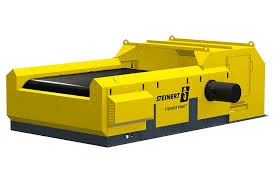Hammer mill shredders, known for their efficiency and effectiveness, play a crucial role in waste management and recycling processes. These machines are engineered to transform various materials into smaller, manageable pieces, facilitating easier processing and disposal. This article explores the key features, applications, and benefits of hammer mill shredders, supported by expert insights and real-life experiences.

A hammer mill shredder operates on a simple principle it uses high-speed rotary hammers to crush materials into smaller sizes. These machines are versatile, able to process a wide array of materials including metals, plastics, wood, and even e-waste. The efficiency of the shredding process reduces the need for additional processing and maximizes output. Such performance scalability makes these shredders ideal for both large-scale industrial applications and smaller, localized recycling efforts.
The expertise involved in the design and operation of hammer mill shredders ensures they meet various environmental and regulatory standards. Manufacturers employ advanced metallurgy to enhance the durability of hammers and screens, resulting in machines that can withstand significant wear and tear while maintaining high-performance levels. Furthermore, variables such as rotor speed, hammer design, and screen size can be adjusted to suit specific materials, allowing for a tailored approach to shredding.

In terms of authoritativeness, industry leaders such as Schutte Hammermill and Williams Crusher & Pulverizer stand out due to their decades-long experience and innovations in producing world-class shredding equipment. These companies are consistently at the forefront of introducing features that not only improve efficiency but also enhance safety and ease of use. For instance, modern hammer mill shredders often include automatic feed control mechanisms and sound enclosures to minimize noise pollution.
hammer mill shredder
Moreover, the trustworthiness of hammer mill shredders is reflected in real-world applications across industries. In metal recycling, for example, these machines are instrumental in breaking down scrap metal into smaller, more manageable pieces, facilitating efficient sorting and processing. In the agricultural sector, hammer mill shredders aid in the production of animal feed by grinding grains into fine meal. This dual-purpose capability enhances their reliability across different sectors, making them indispensable in both recycling and manufacturing environments.
Testimonials from professionals highlight the invaluable role of hammer mill shredders in optimizing operational efficiency and reducing costs. Operators frequently praise their straightforward maintenance protocols and low operational costs compared to other shredding equipment. Regular users credit the machines with a significant reduction in downtime and an increase in productivity, underscoring their importance in a cost-sensitive industry.
Despite their widespread use, it is crucial for operators to receive proper training to maximize the shredders' capabilities. This includes understanding the material composition, customizing screen sizes, and maintaining regular inspections to ensure all components operate seamlessly. Such diligent oversight extends the lifespan of the machine and minimizes the risk of unexpected breakdowns, reinforcing the reliability of hammer mill shredders as a staple in material reduction.
In conclusion, hammer mill shredders stand out for their efficiency, adaptability, and reliability. They are an essential element in the toolkit for waste management and recycling, providing significant contributions to various industries. By investing in quality hammer mill shredders and adhering to proper maintenance protocols, businesses can ensure sustainable and economical operations, effectively turning what was once waste into valuable resources. These machines exemplify a perfect blend of experience, expertise, and trustworthiness, cementing their role as the backbone of modern recycling efforts.


